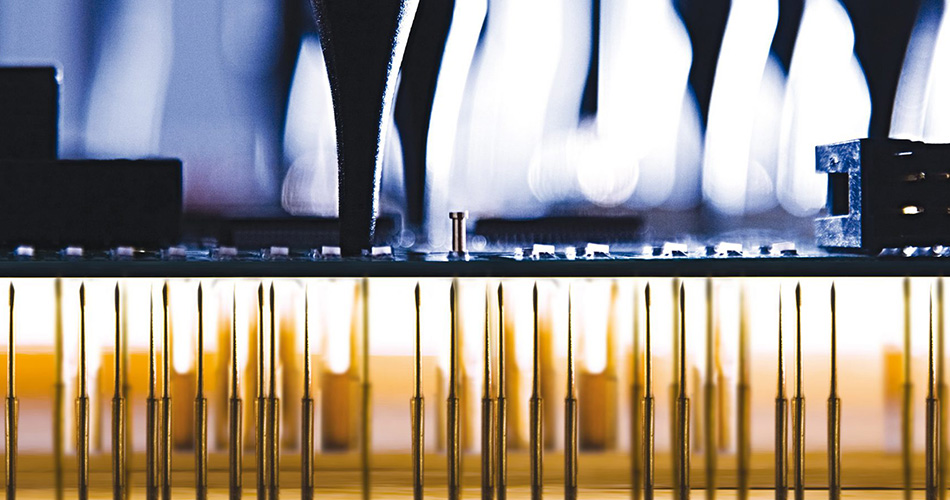- English
- Español
- Português
- русский
- Français
- 日本語
- Deutsch
- tiếng Việt
- Italiano
- Nederlands
- ภาษาไทย
- Polski
- 한국어
- Svenska
- magyar
- Malay
- বাংলা ভাষার
- Dansk
- Suomi
- हिन्दी
- Pilipino
- Türkçe
- Gaeilge
- العربية
- Indonesia
- Norsk
- تمل
- český
- ελληνικά
- український
- Javanese
- فارسی
- தமிழ்
- తెలుగు
- नेपाली
- Burmese
- български
- ລາວ
- Latine
- Қазақша
- Euskal
- Azərbaycan
- Slovenský jazyk
- Македонски
- Lietuvos
- Eesti Keel
- Română
- Slovenski
- मराठी
- Srpski језик
Intelligent detection equipment in PCBA processing
With the continuous upgrading of electronic products and the increase in market demand, the complexity and precision requirements of PCBA (Printed Circuit Board Assembly) processing are getting higher and higher. In this context, the application of intelligent detection equipment in PCBA processing has become particularly important. Intelligent detection equipment can effectively improve the detection efficiency and accuracy of products, reduce the defective rate, and improve the overall production quality. This article will explore the role of intelligent detection equipment in PCBA processing and its main applications.

The role of intelligent detection equipment
In the PCBA processing process, the detection link is directly related to the quality and reliability of the product. Traditional manual detection is not only inefficient, but also prone to missed detection and false detection. The introduction of intelligent detection equipment can greatly improve the accuracy and efficiency of detection.
1. Improve detection accuracy
Intelligent detection equipment usually uses advanced image processing, optical detection and data analysis technology to accurately identify tiny defects on circuit boards, such as solder joint defects, component offset, etc. Compared with manual detection, intelligent equipment can avoid errors caused by human factors and ensure that each PCBA product meets high standards of quality requirements.
2. Improve detection efficiency
Intelligent detection equipment can complete the detection of a large number of PCBA products in a short time, greatly improving production efficiency. For example, automatic optical inspection (AOI) equipment can quickly scan circuit boards and automatically identify and classify various defects. Compared with traditional manual inspection, intelligent equipment can complete inspection tasks at a faster speed and higher accuracy, thereby shortening the production cycle.
3. Data analysis and feedback
Intelligent detection equipment can not only detect problems in PCBA processing, but also provide feedback on problems in the production process through data analysis. These data can help companies identify weak links in production, optimize processes and improve quality, thereby further improving production efficiency and product quality.
Main intelligent detection equipment in PCBA processing
In the PCBA processing process, common Intelligent Detection Equipment includes automatic optical inspection (AOI), automatic X-ray inspection (AXI) and online test (ICT) equipment. Each device has its specific functions and application scenarios.
1. Automatic optical inspection (AOI)
Automatic optical inspection equipment is one of the most commonly used detection tools in PCBA processing. AOI uses a high-resolution camera to scan the circuit board to detect the shape of the solder joints, the installation position of components, etc. Its advantages are fast speed and high precision, and it is suitable for rapid detection in mass production. However, AOI has limited detection effect on some internal defects or complex solder joints.
2. Automatic X-ray Inspection (AXI)
Automatic X-ray Inspection equipment penetrates the PCBA board through X-rays to detect internal solder joints and hidden defects, such as the welding quality under the BGA (Ball Grid Array) device. AXI equipment can detect internal defects that AOI cannot identify, so it is widely used in the inspection of high-density and complex circuit boards.
3. In-circuit Testing (ICT)
In-circuit testing equipment detects problems such as circuit connection, short circuit and open circuit of PCBA through electrical testing. ICT can detect electrical faults on circuit boards at an early stage, thereby reducing the cost of rework and repair. Compared with AOI and AXI, ICT focuses on electrical performance rather than physical appearance.
Future Development Trends of Intelligent Inspection Equipment
With the continuous advancement of PCBA processing technology, intelligent inspection equipment is also developing in a more intelligent and multifunctional direction. In the future, intelligent testing equipment will pay more attention to the comprehensive analysis and feedback of data, and further integrate real-time monitoring and quality control in the production process.
1. Multifunctional integration
In the future, intelligent testing equipment may integrate multiple testing functions, such as the combined use of AOI, AXI and ICT, to achieve one-stop comprehensive testing. This can not only improve the comprehensiveness of testing, but also save equipment investment and operating space.
2. Data-driven intelligent testing
With the development of big data and artificial intelligence technology, intelligent testing equipment will rely more on data-driven analysis and decision-making. Through the analysis of a large amount of production data, intelligent equipment can automatically optimize the detection parameters and improve the accuracy and efficiency of detection.
Summary
The application of intelligent testing equipment in PCBA processing not only improves the detection accuracy and efficiency of products, but also provides strong support for quality control. With the continuous advancement of technology, intelligent testing equipment will play an increasingly important role in PCBA processing, helping enterprises to improve product quality and enhance market competitiveness. In the future, the development of intelligent testing equipment will further promote the intelligence and efficiency of the PCBA processing industry.
Send Inquiry
-
Delivery Service






-
Payment Options









